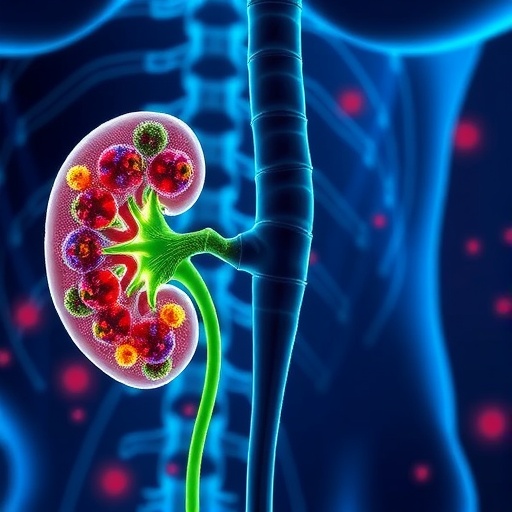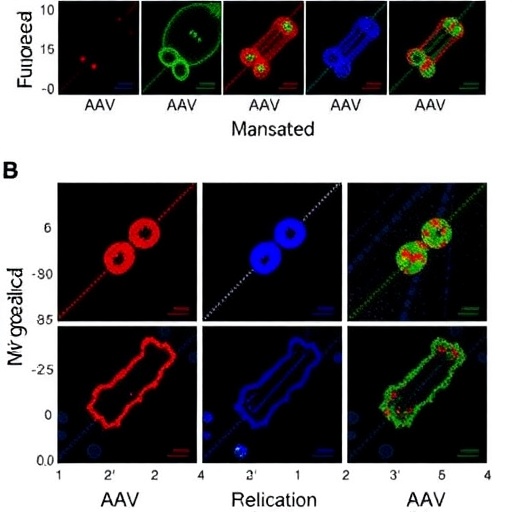In the realm of medical technology, the precision of drug delivery can make a significant difference in patient outcomes, especially among ventilated patients. The recent study authored by Sivarasu, Eyasim, and Mbanefo delves into the intricacies of coordinating actuation and inhalation in automated Metered Dose Inhaler (MDI) systems. This research is poised to revolutionize how healthcare professionals approach inhalation therapies, especially for those with compromised respiratory functions. The vital connection between actuation timing and inhalation efficacy has never been more pressing, particularly as the field of respiratory care evolves.
Ventilated patients often face a myriad of challenges, with the coordination of breathing dynamics and medication delivery being among the most complex. The actuation of an inhaler demands a synchronized inhalation effort from the patient, which can be inherently difficult for individuals already struggling to breathe effectively. The study puts forth an innovative analysis that seeks to optimize this coordination, ultimately improving therapeutic outcomes and patient experiences. The implications of this research extend beyond technical improvements; they touch upon the very essence of patient-centered care in clinical settings.
One of the critical findings from this research is the elucidation of how timing delays in the actuation of MDIs can vastly affect the deposition of medication within the lungs. The authors utilized advanced simulation models to illustrate these delays, providing a nuanced understanding of the physiological responses involved. This breakthrough is not just an academic endeavor; it translates into practical guidelines for clinicians who often overlook the importance of this synchronization in respiratory care protocols.
Moreover, the study addresses the growing relevance of automated systems to enhance the delivery of inhaled therapies. Automation can help mitigate human error, particularly in situations where critical coordination between breath and drug actuation can be compromised by anxiety or physical limitations faced by the patient. By integrating smart inhaler technologies, medical practitioners can ensure more reliable delivery of therapeutic agents, fostering better adherence to treatment regimens and, ultimately, improved patient outcomes.
As healthcare continues to navigate the challenges posed by respiratory illnesses, understanding the interaction between inhalation mechanics and medication actuation becomes vital. The research presented by this team acts as a cornerstone, establishing baseline knowledge for future studies aimed at refining inhalation techniques. The innovative perspectives offered bring forth the promise of tailored therapeutic approaches that consider individual patient needs and responses.
The authors emphasize the importance of a multidisciplinary approach in conducting this research. By incorporating insights from fields such as respiratory therapy, engineering, and pharmacology, the study lays the groundwork for comprehensive inhalation systems that are not only technologically advanced but also tailored to the lived experiences of ventilated patients. This collaborative effort highlights the critical necessity of having diverse expertise to tackle complex medical challenges effectively.
In the coming years, the healthcare industry anticipates a surge in personalized medicine. This study aligns perfectly with that trajectory, as it promotes adaptable inhaler systems that can be fine-tuned to each patient’s unique physiological responses. The potential for customized inhalation therapies represents a significant leap toward precision medicine, where treatments are constructed to fit the distinctive profiles of individual patients rather than a one-size-fits-all model.
Furthermore, the practical applications of this research are vast. Closer attention to actuation-inhalation coordination not only enhances the effectiveness of treatment for ventilated patients but also extends to broader populations who use inhalers. Asthma and chronic obstructive pulmonary disease (COPD) patients, for instance, can benefit from refined inhalation techniques and improved drug delivery systems, paving the way for an overall reduction in medication wastage and better disease management.
The insights gleaned from Sivarasu, Eyasim, and Mbanefo’s work also set the stage for further innovations in inhaler design and functionality. As the testing of materials and mechanics advances, future inhalers could incorporate feedback mechanisms that inform patients in real-time about their inhalation techniques, further supporting adherence and enhancing therapeutic effectiveness.
This study serves as a clarion call to the medical community to re-evaluate existing inhalation practices and consider the integration of technology to facilitate effective therapy delivery. Collaboration among engineers, clinicians, and researchers will be key in driving this change—ushering in a new era of smart inhalation devices designed to maximize patient autonomy and improve health outcomes.
The next few years will undoubtedly witness a paradigm shift in how inhalered therapies are delivered, thanks in large part to the findings presented in this in-depth study. The ongoing advancements in this field promise not only to enhance medication adherence but also to reduce the psychological burden experienced by patients during their inhalation therapies, cultivating an environment conducive to healing and recovery.
As this research gains recognition, it embodies not merely a technical advancement, but a profound commitment to improving the lives of patients who rely on inhaled medications. The future of respiratory therapy seems bright, driven by innovations from studies like this, which prioritize patient engagement, technological sophistication, and a refined understanding of the actuation-inhalation relationship.
This investigation is a step forward in embracing complexity and detail in medical treatment innovations, reinforcing the necessity to address nuances in patient care. It beckons a future where precision medicine and empathy are seamlessly intertwined, validating the need for research that elevates patient experiences in meaningful ways.
In summary, the work put forth by Sivarasu, Eyasim, and Mbanefo dramatically shifts the conversation surrounding inhalation therapies for ventilated patients and opens numerous pathways for future research and technological innovation. The synergy between human factors and advanced medical devices stands as a testament to the evolving nature of healthcare, where understanding and empathy guide the quest for therapeutic excellence.
Subject of Research: Actuation-Inhalation Coordination in Ventilated Patients
Article Title: Towards an Improved Understanding of the Actuation-Inhalation Coordination in Ventilated Patients Using an Automated Metered Dosage Inhaler (MDI) Delivery System.
Article References:
Sivarasu, S., Eyasim, A. & Mbanefo, C. Towards an Improved Understanding of the Actuation-Inhalation Coordination in Ventilated Patients Using an Automated Metered Dosage Inhaler (MDI) Delivery System.
J. Med. Biol. Eng. (2025). https://doi.org/10.1007/s40846-025-00993-w
Image Credits: AI Generated
DOI: https://doi.org/10.1007/s40846-025-00993-w
Keywords: inhalation therapy, metered dose inhaler, actuation coordination, ventilated patients, automated systems, personalized medicine.
Tags: actuation timing and inhalation efficacyautomated metered dose inhaler systemsbreathing dynamics in medical technologychallenges in inhalation therapydrug delivery precision in respiratory careenhancing patient experiences in respiratory careimproving therapeutic outcomes for ventilated patientsinhaler coordination in ventilated patientsinnovative analysis in respiratory treatmentoptimizing medication delivery for respiratory patientspatient-centered care in inhalation therapiessynchronization of inhalation and actuation





